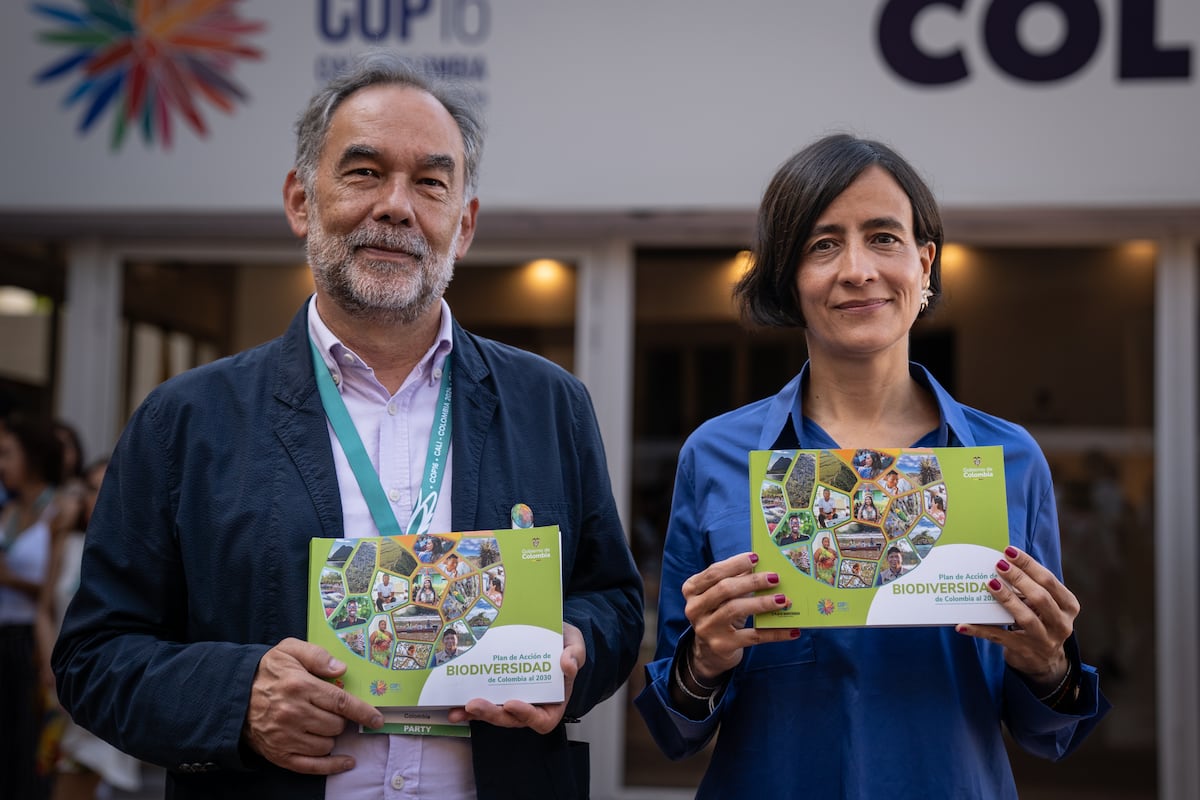Six goals and 76 billion pesos: Colombia’s plan to attack biodiversity loss America of the future

EL PAÍS openly offers the America Futura section for its daily and global information contribution on sustainable development. If you want to support our journalism, subscribe Here,
Colombia has just paid off its debt. Despite being host of the global conference on biological diversity, COP16, which is taking place in the city of Cali, the country has been late in submitting its National Biodiversity Action Plan, the document includes a guide on what to do so far Must be done and to reduce the loss of species, plants and ecosystems by 2030. This is a commitment that Colombia made, like 196 other countries, at the last conference, COP15, to be held in Montreal, Canada in 2022. There, nations not only created a global framework of 23 goals to prevent this harm, but established that at this COP16 they should present how to implement them at the national level. The figures so far are somewhat discouraging: only 35 of the 196 countries that signed up to the agreement have done so.
The plan – which was presented by the Deputy Minister of Environment, Mauricio Cabrera, while the Portfolio Minister, Susana Muhammad took up her post as COP16 President – is a detailed plan. It has six national goals, 30 strategic actions, 89 indicators and serves 15 out of 19 ministries and all sectors. He points out that, to accomplish 84% of what he wants, 76.5 trillion pesos ($19,435 million) will be needed by 2030. “To review this document, 23,000 people participated and consulted,” Cabrera said. Linked to the country’s other essential policies, such as international climate commitments, the national development plan or the implementation of the peace agreement signed with the extinct FARC guerrilla in 2016.
Briefly, one of the six objectives is that at least 19 million hectares – continental or coastal – be managed from a climate change and biodiversity perspective; Another 5 million hectares should be converted to sustainable production models or restored; 3% of GDP comes from biodiversity; Treated waste water flow reaches 68%; And that 34% of the area is under some form of conservation.
Although the previous government of Iván Duque stated that this percentage had already been achieved with the protection of 37% of marine ecosystems and 31% of land areas, Catalina Góngora, public policy leader nature conservation (TNC), points out that the novelty is that the new plan also includes inland waters. “It’s some catalyst,” he explains.
The sixth and final objective is to finance the plan, which will require an investment of approximately 10.9 trillion pesos ($2,776 million) each year. Currently, according to the calculations of the Comptroller General of the Republic cited in the document, about 41% of public financing for the management of biodiversity in Colombia comes from the national government, 32% from the regional level, 22% from environmental authorities and 5% from environmental protection agencies. Of royalty resources. “It is estimated that about 65% of financing needs for 2030 will be covered by public resources,” they warn.
As Cabrera recalled, implementing this biodiversity plan also means reevaluating the perverse incentives given to agricultural, energy and tourism activities that ultimately harm biological diversity. “Detrimental finance still represents 7% of the country’s GDP,” said Carolina Diaz, director of Environment and Sustainable Development of the National Planning Department.
Although the challenge that Colombia faces over the next six years is enormous, there is relief among those heading towards COP16 in the fact that the plan is already in place, and with such detailed indicators. Ximena Barrera, director of government relations and international affairs at WWF Colombia, told this newspaper that it was a promising strategy that highlighted how communities, the environmental sector, NGOs and subnational governments were involved in decision-making.
“We should celebrate this commitment,” says Góngora, who is aware of the challenges that lie ahead, especially in this first step in protecting freshwater ecosystems. “Currently Colombia lacks detailed mapping of rivers and adequate protection mechanisms for these ecosystems. Current plans do not adequately consider aquatic systems, their connectivity and their dynamics,” he adds, and recalls that one of the things the plan also recognizes is that, in order to take it forward, For this, local communities, Africans and African governments, are needed indigenously.